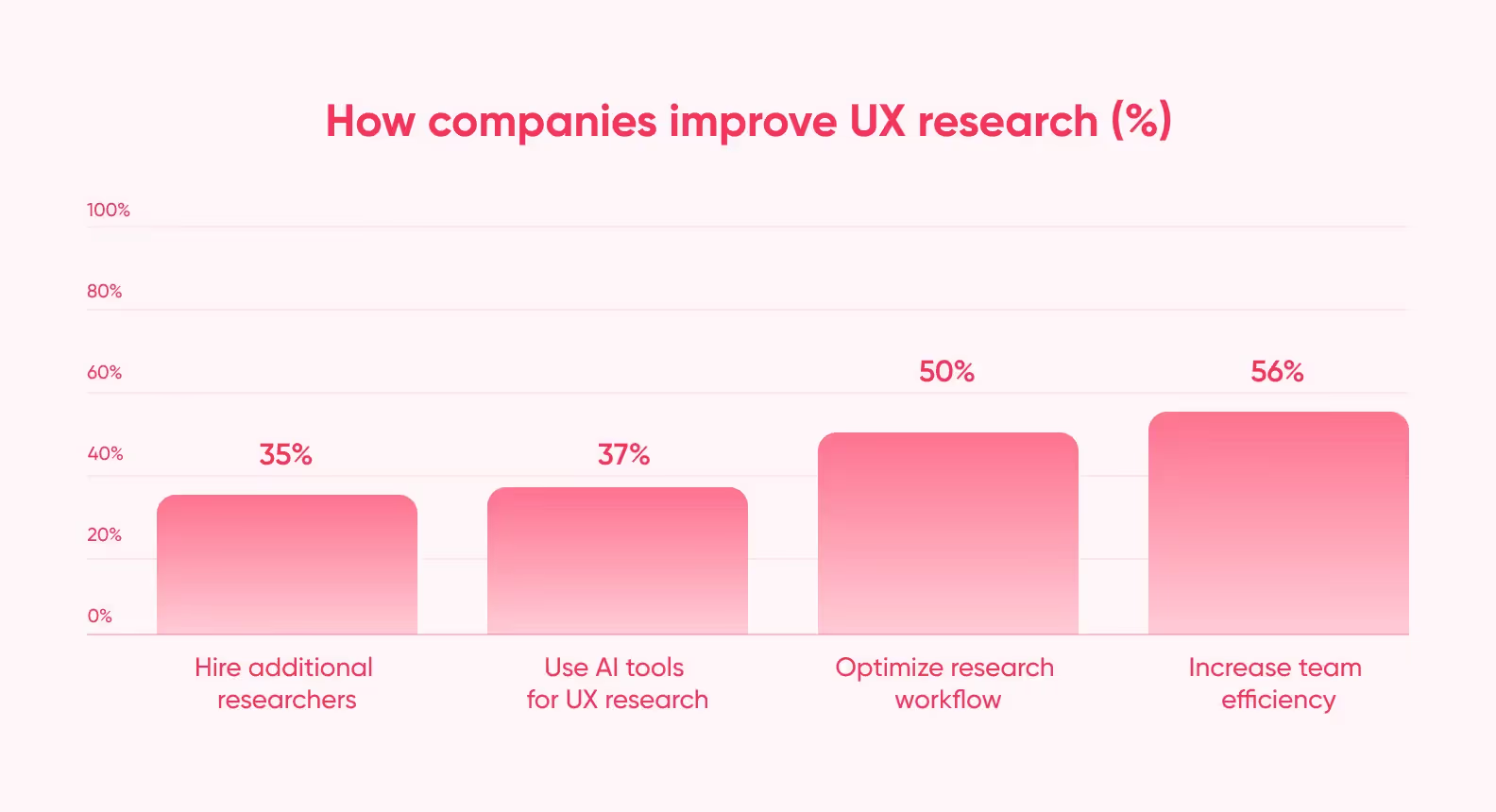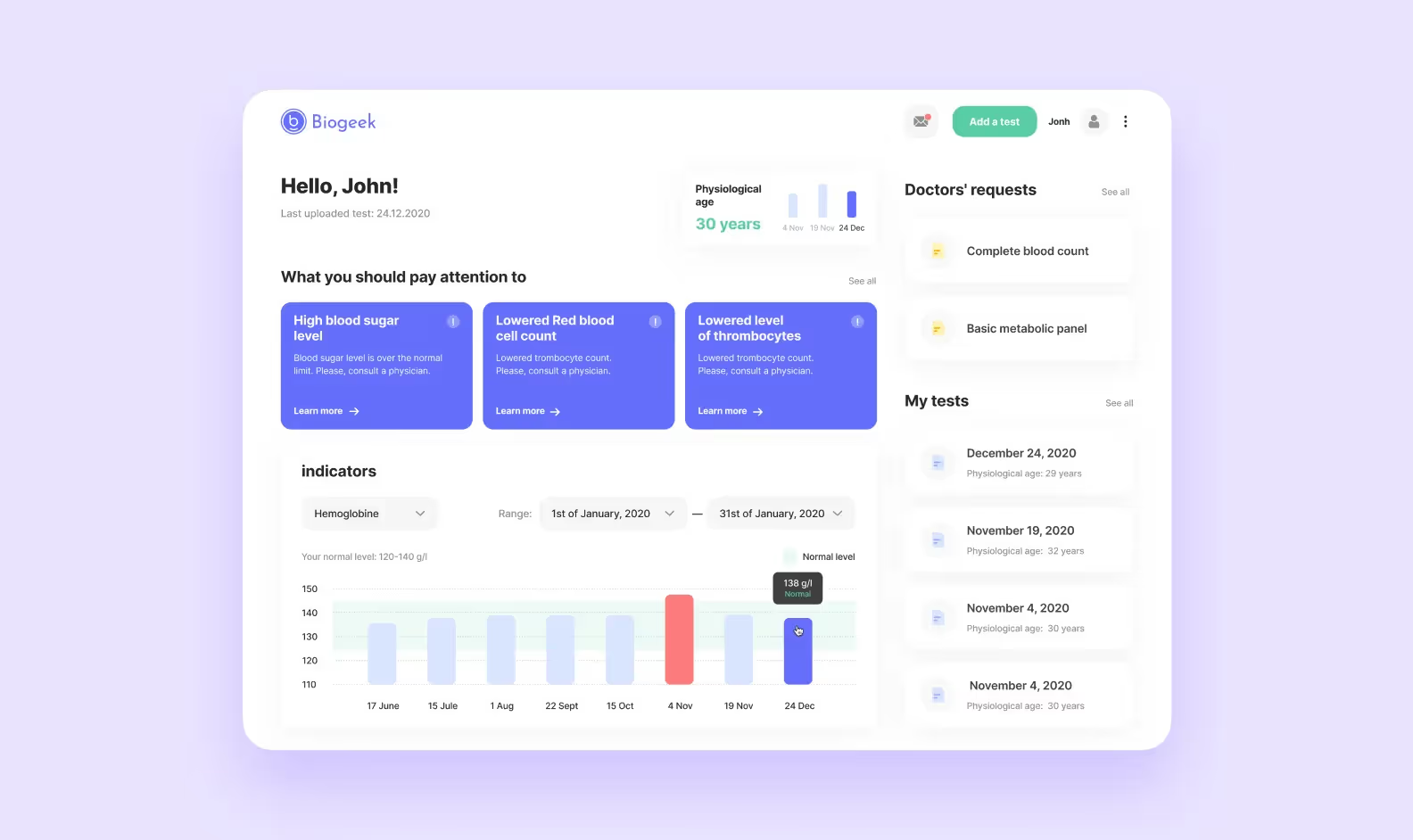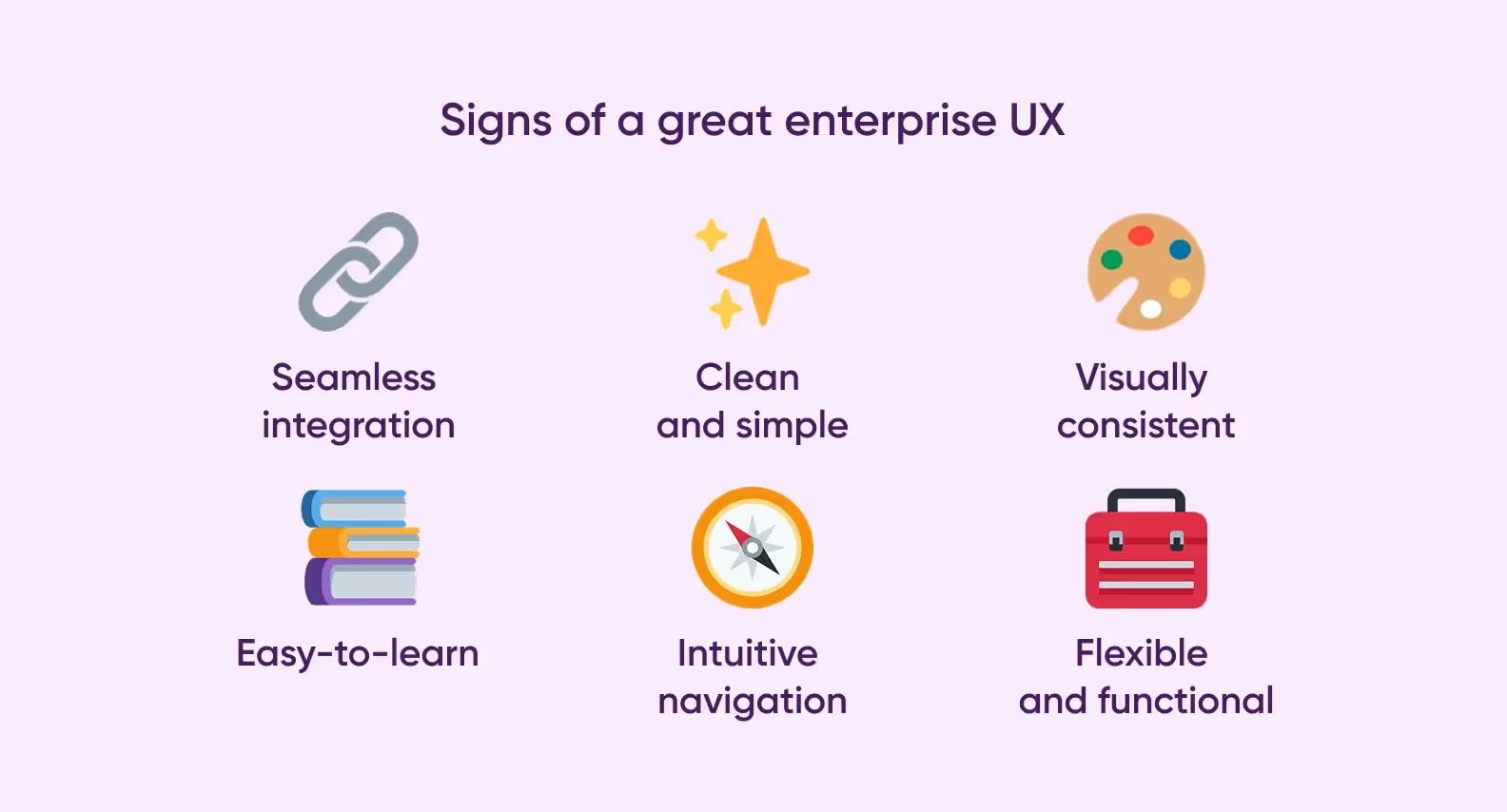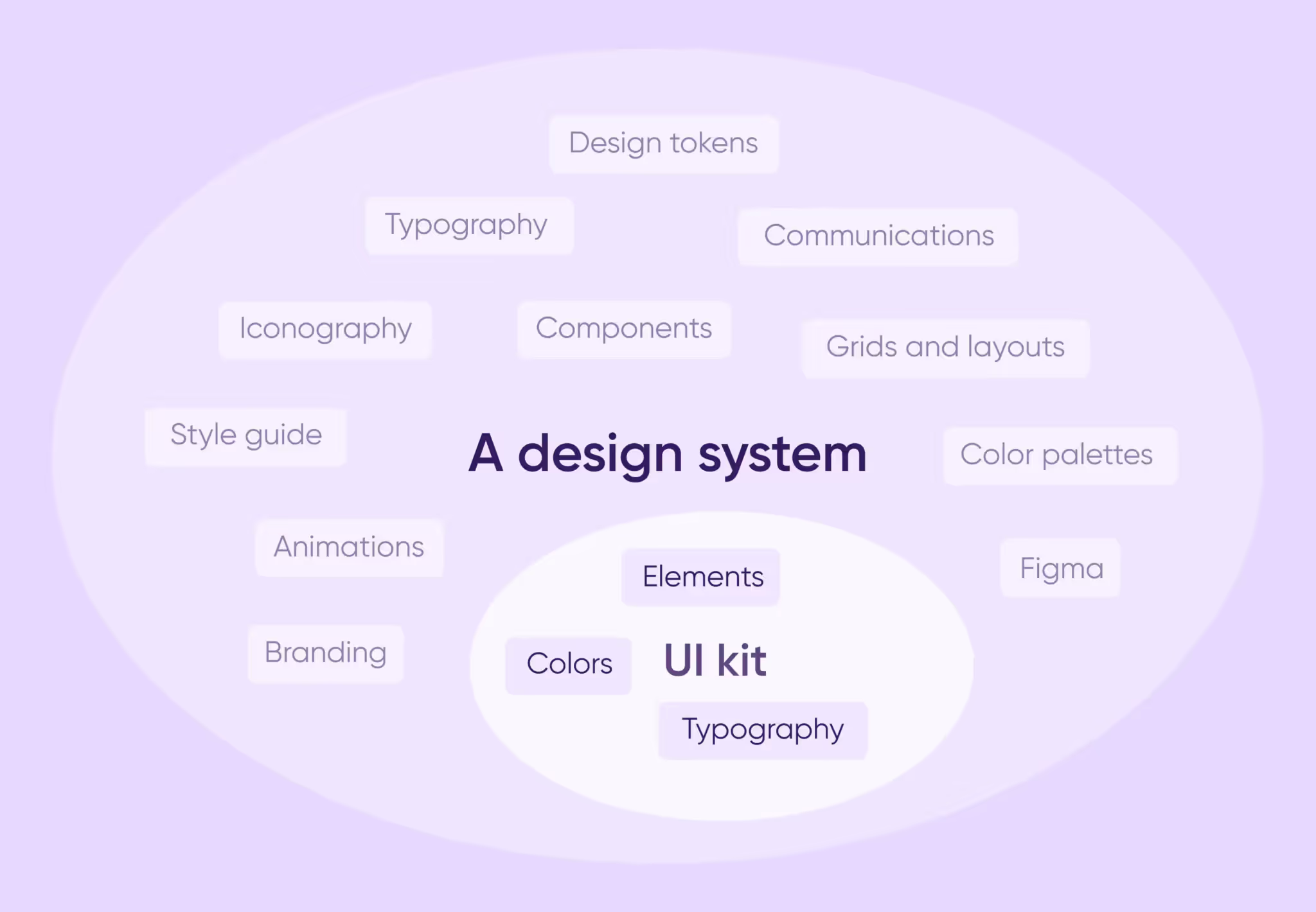


Do you want to turn a “standard” business into a juggernaut capable of disrupting an industry? Well, nothing seems more important than efficiency and productivity. In our practice, the best way to improve in these fields is to focus on enterprise UX design. Also, make a whole lot of business processes faster, better, and smoother.
Enterprise apps increase the efficiency of supply chains and HR management. They boost corporate communications and productivity. Examples of enterprise solutions include ERP, CRM, and other similar systems.
%20(1)%20(1).avif)
Enterprise UX design is all about making great software for corporations. It’s about designing tools that improve business. This design process focuses on solving specific issues. For instance, if a company can’t scale up without improving its business processes. Often, these companies have very basic MVP UX design and need upgrading.
Well-designed enterprise software aligns with the needs of the corporation. The general population doesn’t see the inner workings of business apps. Many components boost efficiency instead of engagement or user retention.
A couple of decades ago, a typical company had to hire dozens, if not hundreds, of employees. They managed other employees and various aspects of their business. Human resources, corporate resources, logistics, and marketing were labor-hungry and wanted educated staffers to work well.
Modern enterprise UX designers want to solve the same issues, but with efficiency of modern era technologies.
Here are some examples:
Enterprise UX designers can target other business processes. For instance, knowledge, supply chain, content, and payroll management systems. These are also quite popular and often improve the performance of a business.
It’s crucial to understand the role of efficiency and reliability in business. By doing so, it’s possible to elevate enterprise UX design efforts. Then, you build easy-to-use and result-focused apps.
<div class="post_divider"></div>
⭐Our experience: building a simple yet powerful CRM
A manufacturer of agricultural machinery asked us to build a mobile application Koblik. It had to work without an internet connection. It was a very specific task for our enterprise UX designers. We created a simple, minimalistic visual design. Then, we made sure that the workflow is intuitive (pick a date, schedule a task). Finally, we made the app usable offline.

<div class="post_divider"></div>
Some people think it’s easy to design enterprise apps if you have enough experience in consumer UX design. On one hand, it’s true that both demand high-level coding skills and product management. On the other, they are fundamentally different in many other aspects.
Consumer and enterprise software serve humans, first and foremost. However, users of the latter are usually employees. As designers, we have to think about user needs, so we ignore retention, engagement metrics, and visual catchiness. These are important in consumer UX.
Our goal is to design an app that focuses on solving specific issues listed by clients as crucial. At the same time, we try to maintain a high level of graphical fidelity, intuitiveness, and compatibility with legacy systems.
We summarized some differences between consumer and enterprise UX design:
In general, consumer software doesn’t have many limitations in creativity. The nature of the market and target audience is uncertain. Whatever works or has a strong potential to work… well… works. Continuous UX development and endless iterations characterize it quite well.
Enterprise UX design focuses on finding the right balance. It’s a tug of war between convenience and reaching UX goals set by the client. Blending together usability and functionality is also one of the main points of enterprise UX designers.
Finding weaknesses in existing business processes and workflows is a great starting point. All enterprise software design specialists believe that creating something impactful is possible. You only need a proper UX audit that brings in valuable data. It allows us to pinpoint issues that call for more creative solutions.
It’s crucial to build an application that feels good to use, but still delivers great performance metrics. It’s not easy, yet it has to be achieved through the enterprise UX design process.
When a client walks through our metaphorical door, they have a certain vision in mind. They see a very particular enterprise app. It solves all their problems with ease and makes employees happy. A great application sends all performance metrics through the roof, and cuts costs by 99.99%. Unfortunately, that’s not how the cookie crumbles.
We must make trade-offs and compromises to design convenient and reliable systems. They also have to be productive and fun to use. Yet, we have to build them on the existing foundation. The initial research often brings to the surface issues that have never crossed the mind of a client.
So, how should one achieve an effective enterprise UX design?
UX research, in particular, demands focused attention. A survey by Fortube Business Insights shows it well. They interviewed 1,200 professionals. Many are strongly focused on researching UX.

Some think that these challenges are not that difficult to solve. In some cases, they are. However, it can be a frustrating process for clients and developers to find the right balance while keeping up with demanding timelines. So, the question is whether the juice is worth the squeezing.
In 2022, McKinsey published the “Business value of design” report. It surveyed medium and large companies. Those strong in design (including enterprise UX design) saw a 32% faster growth compared to their peers. It’s hard to find reliable data about ROI when it comes to investing in enterprise apps. Industry reports vary, but the consensus is that it is almost always worth it to put effort into a better UX design.
Companies that invest a lot in enterprise solutions and better UX reap the rewards. They enjoy all sorts of competitive advantages.
A great HRM is a game changer in communication between employees and employers. Gensler says that office staffers spend 42% of their time working with colleagues. The “State of Collaboration Survey” report by Corel shows another statistic. It says that 70% of people think that bad collaboration tools hinder performance.
High-quality enterprise apps that enhance communications build a nicer, more productive work environment. Team sales go through the roof due to collaborative work within a well-designed CRM.
One of the main goals of enterprise UX designers is to create a more elegant system of data management. Data comes in all shapes, sizes and colors. Categorizing and analyzing it is a great way of identifying issues with workflows.
Obtaining high-quality data is often not enough. You also need various ways to comb through it and receive something useful.
<div class="post_divider"></div>
⭐Our experience: data-focused enterprise application for Biogeek
Biogeek is a unique service connecting health-conscious users with experts in nutrition. The platform (web and mobile apps) we built is primarily designed to be data-driven. It allows users, experts, and the company itself to analyze massive swaths of data. We made the UI informative yet clean. It displays every bit of data that has relevance to the platform and its users.

<div class="post_divider"></div>
ROI is always a top priority for a business during the decision-making process. As mentioned above, experts at McKinsey value a strong focus on enterprise UX design. It can lead to a 32% faster growth compared to market benchmarks.
A better-designed UX results in cost savings. Businesses spend less on user training, technical support, and user satisfaction. You’ll notice cost reduction during the first weeks of using enterprise apps.
HR managers always talk about the importance of talent acquisition and retention, which the quality of enterprise solutions directly affects. A new employee feels better using a CRM that has a smooth learning curve and doesn’t give them a headache. Which means the likelihood of enterprise users enjoying the workflow and feeling satisfied goes up.
Learning a new app and becoming proficient at it is a crucial part of the onboarding process. You save time and money by making it as painless as possible.
For an untrained eye, noticing what makes a piece of enterprise software good is a difficult task. For starters, enterprise apps don’t have to be flashy or engaging. While graphical fidelity and aesthetics matter, they do not take center stage.

On the other hand, if you cannot distinguish the wheat from the chaff, you won’t form the right image of what a great CRM or HRM looks like. So, let’s talk about things that separate truly innovative solutions from the ones that are just fine.
Compared to consumer UX, enterprise UX emphasizes employee productivity. It values efficiency and other performance metrics. Some components are often complex, have many types of data, and use sophisticated analytics. All that intricacy is invisible to enterprise users. Finding the right balance between complexity and simplicity can be quite difficult.
Asking a professional to do all the work on UX/UI design is the best course of action in most cases. As the joke goes, if you have to explain it, it’s not very good. Creating a good user interface that never confuses the user is a tough task, so, employing user-centric designs is always great.
A simple and fast onboarding process saves you money. You know it, we know it, everyone knows it. Simplifying the learning process is the job of a well-designed enterprise apps. They must have intuitive navigation to reduce the cognitive load on the user!
How fancy a CRM looks doesn’t affect the functionality. However, it doesn’t mean that aesthetics should be an inconsistent afterthought. All enterprise systems should never interrupt the workflow and be consistent. For example, if you have red buttons for cancelling on one page, don’t make them green on the next.
A big challenge for enterprise UX designers is merging legacy systems with new designs. A business that already has a functional digital infrastructure doesn’t want to break it. A good piece of enterprise software must be fully compatible with legacy systems.
Finally, designers focus on creating instruments that adapt to different, often unique, processes. In practice, it means having varying user roles. There should be different ways of working with entries and a plethora of tools that help employees set tasks and complete them.
Experience and the right skill set help a lot in enterprise projects. Yet, each case requires an individual approach. So, we find ourselves in a peculiar spot. The creativity seems necessary, yet we face limitations. The acquired knowledge works well only after in-depth research of each particular case. So, let’s talk about how the process should look!
To build an app that works for enterprise users, developers must learn time-tested workflows within the organization. Its team dynamics and employee behavior paint a detailed picture of the client’s company. It is possible to understand the needs by observing this picture! Just studying third-party solutions to find what works well is not enough.
Traditional research methods rarely yield good results when it comes to enterprise UX design. Often, shadowing an employee to understand their tasks and problem-solving methods is the best way to do the UX research.
Prototyping provides some benefits during the development process. Nonetheless, many devs prefer skipping it altogether. In some cases, having a model can be limiting. It forces you into a rigid design process that hinders creativity. However, when it is useful, you should absolutely go for it!
<div class="post_divider"></div>
⭐Our experience: building a prototype to find the right path to success
Appt is a multi-functional web application. It allows business and individual entrepreneurs to grow their online presence. Another feature: lead generation automation. When we started designing this application, having a prototype was a blessing. We found the best way to map out an efficient architecture. We also iterated on navigation components. The final result is an informative application that has visual appeal.

<div class="post_divider"></div>
It’s fun to design elaborate enterprise apps or come up with novel functionality. However, one has to know where to stop. There has to be cohesion and utility in the outcome of the UX crafting process. Whether it is simple or complex, it needs extensive documentation. End users should understand the features and how to use the app most efficiently.
The UI kit is a solid tool to build an efficient enterprise application. Note that the UI kit is not about branding. It’s more about creating a great user interface.

Enterprise solutions should not disrupt existing workflows and business processes. The digital infrastructure also doesn't need to suffer. Ensuring compatibility is an important aspect of designing a great piece of software. If there is a certain business process that the client wants to keep as is, there must be some respect for this wish! It’s better to search for a proper workaround with the enterprise context in mind.
Enterprise UX design is all about creating a highly efficient instrument for a business. It’s hugely important to align business goals and aspirations with user experience, whether we talk about consumers or employees. Implementing a good UX strategy is impactful in many ways, allowing your business to cut costs and increase employee satisfaction simultaneously.
➡️ <a class="blog-modal_opener">Fill in the form</a> to get a free project estimation within 48 hours.